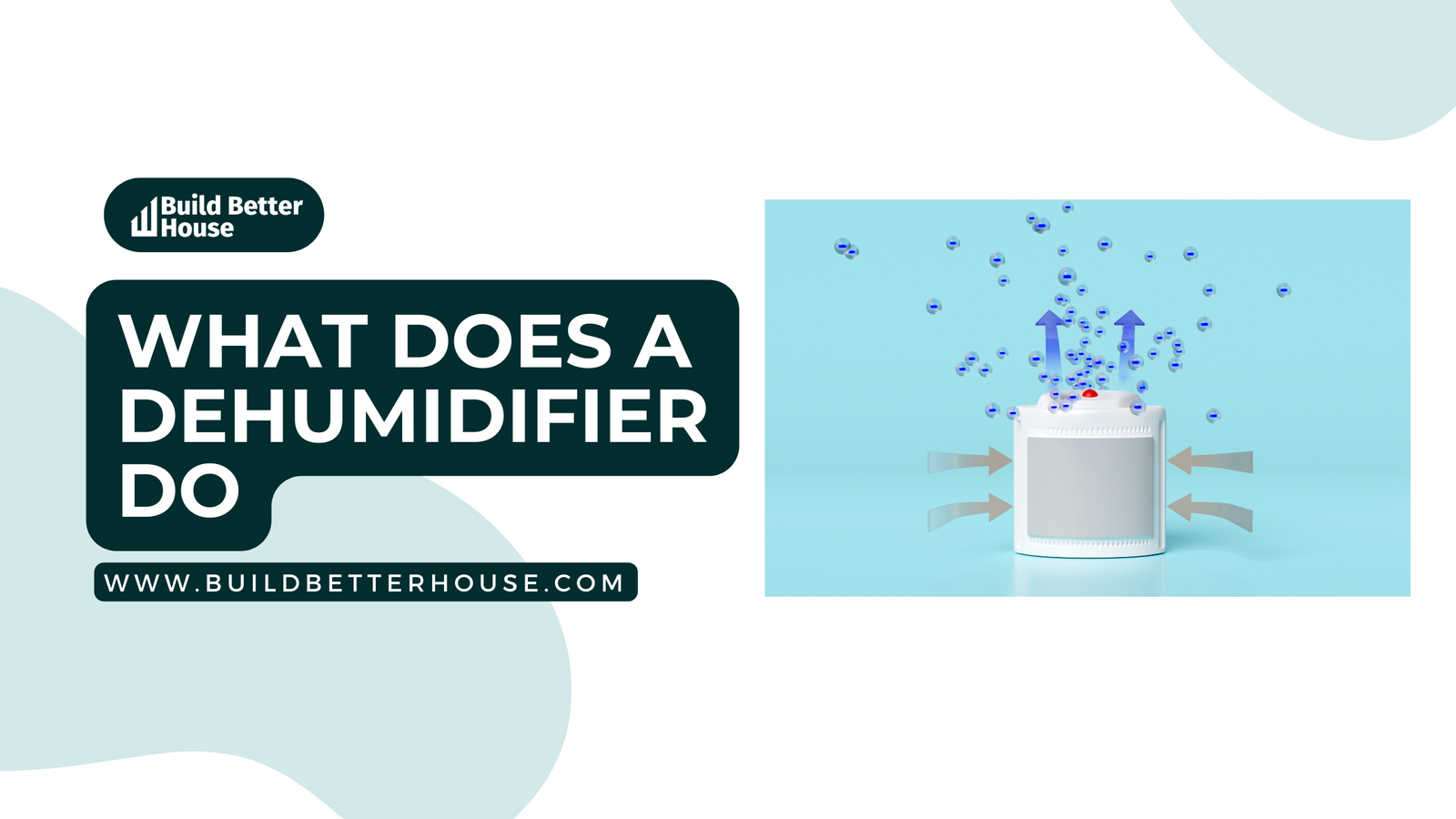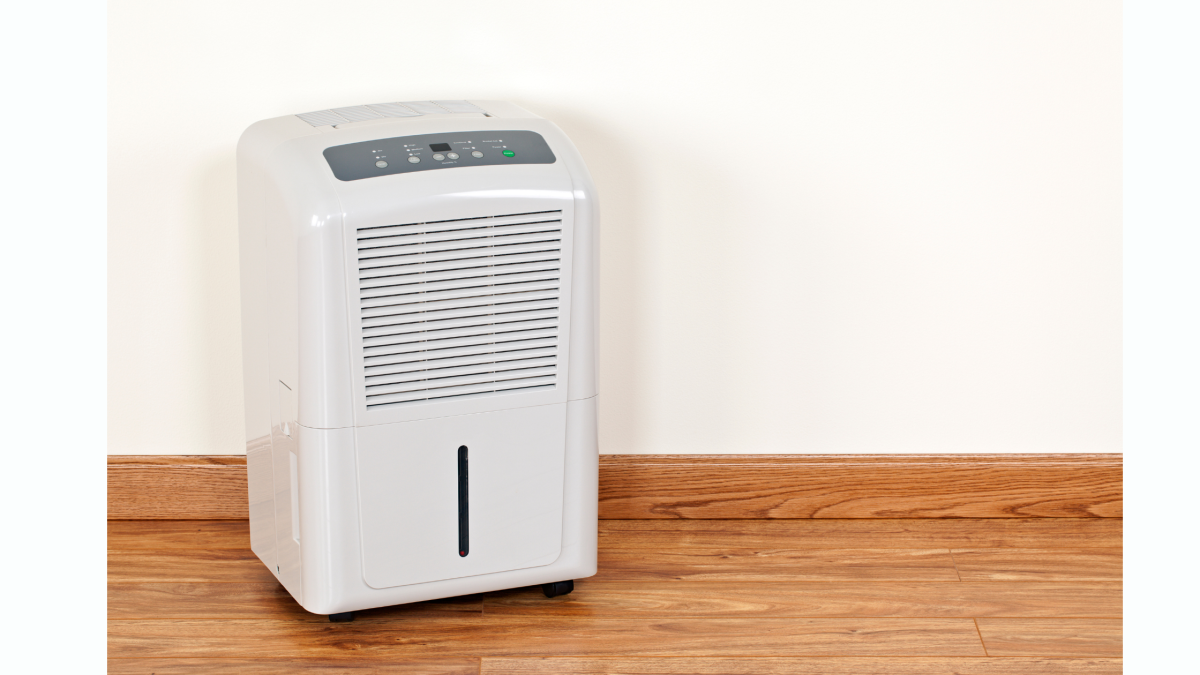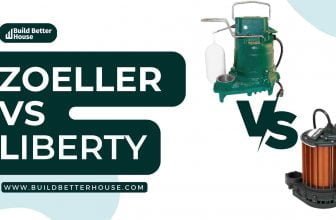What Does a Dehumidifier Do? Understanding its Purpose and Benefits

Dehumidifiers are essential appliances for maintaining a comfortable and healthy living environment. These devices work by removing excess moisture from the air, which can help alleviate symptoms related to allergies and asthma, as well as prevent problems such as mold and mildew growth. By understanding how dehumidifiers function and the benefits they offer, you can make an informed decision about whether to incorporate one into your home.
A proper humidity level is crucial for comfort and health, with most experts recommending a range between 30 percent and 50 percent humidity in indoor spaces. Dehumidifiers aid in achieving this balance by drawing in air and using a cooling coil to remove moisture. The resulting water droplets are then collected in a drip tray for disposal. Maintaining this ideal humidity level can provide numerous benefits to your health and home.

Key Takeaways
- Dehumidifiers regulate indoor humidity by removing excess moisture from the air
- This process supports a healthy living environment and reduces problems related to allergies and mold growth
- To optimize benefits, choose an energy-efficient dehumidifier with proper size and placement, and maintain it regularly.
What is a Dehumidifier
A dehumidifier is an electric appliance designed to remove excess moisture from the air in your home or space. By reducing the humidity levels, a dehumidifier can help create a more comfortable environment and prevent various issues caused by high humidity such as mold growth, allergens, and damage to your property.
When you use a dehumidifier, you will notice that the air inside your home feels less damp and more comfortable. This is because the device works by drawing in air and passing it over a cooling coil, which effectively removes the moisture. The collected water droplets then accumulate in a drip tray or are discharged via a continuous drainage system.
Dehumidifiers come in various sizes and capacities, each designed to cater to different room sizes and humidity levels. Generally, they are capable of removing between 10 pints and 50 pints of water from the air each day. To maintain optimal indoor air quality, it is recommended to keep the humidity levels within the range of 30% to 50%.
In conclusion, a dehumidifier is a vital appliance for those living in humid climates or struggling with excess moisture in their living spaces. By reducing the humidity level, it not only creates a more comfortable environment but also minimizes potential health risks and damage to your belongings.
Benefits of Using a Dehumidifier
Health Benefits
A dehumidifier can significantly improve your health by reducing allergens and irritants in your home. By eliminating excess moisture from the air, you can minimize the growth of mold, dust mites, and mildew. This is particularly beneficial for individuals suffering from allergies, asthma, or respiratory illnesses, as it can alleviate symptoms and make breathing easier.
Using a dehumidifier can also help to prevent skin conditions like eczema, as damp environments can exacerbate itching and irritation. By maintaining optimal humidity levels (typically between 30% and 50%), you can create a healthier living space for you and your family.
Comfort and Convenience Benefits
In addition to health benefits, a dehumidifier can also improve your overall comfort and convenience. Here are a few key advantages:
- Prevent musty odors: By reducing humidity, a dehumidifier can prevent unpleasant smells caused by mold and mildew.
- Protect your belongings: Excess moisture can damage your furniture, electronic devices, and other household items. A dehumidifier helps to preserve their condition by maintaining the recommended humidity levels.
- Increase energy efficiency: By removing excess moisture from the air, your air conditioner can work more efficiently, which can lead to cost savings on your energy bills.
- Improve indoor air quality: Dehumidifiers aid in reducing airborne allergens, which contributes to better air quality within your home.
Keep these benefits in mind as you consider investing in a dehumidifier for your living space. By doing so, you can improve both your health and comfort.
How Dehumidifiers Work
Dehumidifiers are essential appliances that maintain a comfortable indoor environment by reducing excess moisture in the air. They prevent mold and mildew development, protect your home from structural damage, and help alleviate allergy symptoms. In this section, we will discuss the functionality of two types of dehumidifiers: Refrigerant Dehumidifiers and Desiccant Dehumidifiers.
Refrigerant Dehumidifiers
Refrigerant dehumidifiers are the most popular type. They operate using a compressor, a refrigerant, and a fan. These components work together to extract moisture from the air in your living space, capturing the water vapor and converting it into liquid form.
- Fan: A fan pulls warm, moist air from your room and directs it into the dehumidifier.
- Compressor: The compressor then applies pressure to refrigerant, raising its temperature.
- Condenser: As the warm air passes over the cold coils of the condenser, the water vapor condenses into water droplets, which are collected in a tank.
- Refrigerant: This liquid refrigerant absorbs heat from the air. As the remaining cool, dry air is expelled back into your room, the compressor re-pressurizes the heated refrigerant, and the cycle repeats.
It is essential to empty the tank regularly to maintain optimal efficiency, or you can opt for an additional pump to drain the water automatically.
Desiccant Dehumidifiers
Desiccant dehumidifiers use an absorbent material to remove moisture from the air, making them a suitable choice for colder environments where refrigerant dehumidifiers may not perform efficiently. These dehumidifiers usually consist of a desiccant wheel, a fan, and a heater.
- Fan: The dehumidifier draws moist air into the unit, directing it over the desiccant wheel.
- Desiccant wheel: The wheel, containing moisture-absorbing materials like silica gel, adsorbs the water vapor from the air, leaving it drier and cooler.
- Heater: A heater within the unit warms a separate stream of air, which is then directed over the saturated desiccant wheel. The heat causes the trapped moisture to evaporate, and the water vapor is expelled outside.
- Wheel rotation: The desiccant wheel rotates continuously, ensuring that there is always a portion of the wheel available to adsorb moisture from the incoming air.
In conclusion, dehumidifiers help maintain a comfortable and healthy living environment by controlling humidity levels. Choosing between a refrigerant or desiccant dehumidifier depends on your specific requirements and the conditions in your home.
Choosing the Right Size Dehumidifier
When selecting a dehumidifier for your space, it’s crucial to consider the size of the room and the level of moisture present. Dehumidifiers come in various capacities, measured in pints of moisture removed per day, so finding the right size is key to effectively managing humidity levels.
Start by determining the area of the room where you’ll use the dehumidifier. Measure the length and width of the space and multiply them to get the square footage. Use this number as a guide to help select the appropriate dehumidifier capacity.
- Small Room (0-499 sq. ft.): A smaller dehumidifier, holding between 20-30 pints (11.4 and 17 liters) of moisture per day, works well for spaces up to 499 sq. ft.
- Medium Room (500-999 sq. ft.): For rooms between 500 and 999 sq. ft., a dehumidifier with a capacity of around 40-50 pints (22.7 to 28.4 liters) per day would be suitable.
- Large Room (1000+ sq. ft.): In larger rooms over 1000 sq. ft., a dehumidifier rated for 60 pints (34 liters) or more per day is recommended.
Keep in mind that the level of moisture present in the room will also affect the size of the dehumidifier needed. If the space has a higher humidity level or specific issues like water damage, poor ventilation, or preexisting mold growth, you may need a dehumidifier with a higher capacity to effectively address these conditions.
For whole-house dehumidification, consider a whole-house dehumidifier that can be built into and operate as part of your HVAC system. This type of dehumidifier is designed to manage humidity levels throughout your entire home and may be necessary if high humidity is a consistent problem.
By selecting the right size dehumidifier for your space, you can effectively manage humidity levels and maintain a comfortable and healthy environment in your home.
Energy Efficiency and Dehumidifiers
Dehumidifiers help in maintaining a comfortable humidity level in your home by removing excess moisture from the air. As a result, they contribute to a healthier living environment and reduce the chance of moisture-related damage to your home and belongings.
When it comes to energy efficiency, you should check for the Integrated Energy Factor (IEF) as a measure of a dehumidifier’s efficiency. This expresses the amount of water the dehumidifier can remove with a given energy input under test conditions, reported in liters per kilowatt hour (L/kWh). Higher IEF values indicate more efficient dehumidifiers.
For improved energy efficiency, consider purchasing ENERGY STAR certified dehumidifiers. These models consume 10% to 25% less energy than non-certified devices. By opting for a device with a good energy efficiency rating, you can expect reduced energy costs and an overall eco-friendlier choice.
Now, let’s briefly discuss energy costs in terms of your monthly expenditure. The cost of running a dehumidifier depends on the device’s power consumption and your local electricity rate. For example, a dehumidifier with a power consumption of 0.47 kW and an electricity rate of $.13/kWh might cost you:
0.47 kW x $0.13/kWh = $0.06 per hour
$0.06 per hour x 8 hours = $0.48 per day
$0.48 per day x 30 days = $14.4 per month
Please note that these are rough estimates based on specific assumptions, and actual electricity costs could vary. Keep in mind that dehumidifiers may draw higher amounts of power in environments with higher humidity.
In summary, by selecting an energy-efficient dehumidifier, you can effectively manage humidity levels in your home while reducing your energy costs and contributing to a more sustainable future.
Placing and Operating Dehumidifiers
Ideal Spaces for Dehumidifiers
Dehumidifiers are essential for maintaining a healthy living environment in areas prone to excess moisture. Ideal spaces for using dehumidifiers include basements, bathrooms, laundry rooms, and attics, where humidity levels can be higher due to dampness, limited airflow, or increased water usage. By placing a dehumidifier in these spaces, you can help reduce condensation on windows and other surfaces, preventing mold and mildew growth.
Drainage Options
When operating a dehumidifier, it’s crucial to consider the drainage options. There are typically three options:
- Manual draining: Empty the collected water from the dehumidifier’s removable tank when it becomes full.
- Gravity-assisted drainage: Connect a hose to the dehumidifier’s drain port and allow the water to flow out by gravity into a sink, drain, or another suitable location.
- Continuous drainage: Some dehumidifiers come with a built-in pump or are compatible with an external pump that actively pushes water out through a hose, enabling continuous drainage even uphill or over longer distances.
Humidistat and Hygrometer Usage
To optimize the performance of your dehumidifier, it’s essential to use a humidistat and a hygrometer. A humidistat allows you to set your desired humidity level and adjusts the dehumidifier’s operation accordingly. A hygrometer measures the current humidity levels in your space, helping you determine the need for a dehumidifier and monitor its effectiveness.
When setting your humidistat, aim for a relative humidity level of around 30-50%, which is generally considered comfortable and helps inhibit the growth of mold and dust mites. Keep an eye on your hygrometer readings; if the humidity levels remain consistently within the desired range, your dehumidifier is doing its job effectively.
Remember, the proper placement and operation of dehumidifiers can significantly improve the comfort and air quality of your living spaces—making your home a healthier place for everyone.
Maintenance and Cleaning
A dehumidifier is a device that helps maintain a comfortable living environment by drawing excess moisture from the air. To ensure that your dehumidifier operates efficiently and effectively, it is important to regularly clean and maintain the unit.
To keep your dehumidifier clean, you should start by inspecting the filter. This is an essential component of the device, responsible for capturing dust, dirt, and other airborne particles. Ideally, you should check the filter every month and clean it as needed. To clean the filter, remove it from the device and wash it gently with warm soapy water. Rinse thoroughly and allow it to air dry completely before reinstalling it into the unit.
Another key aspect of maintaining your dehumidifier is checking the humidistat. This component is responsible for regulating the amount of moisture that the dehumidifier removes from the air. Make sure to set the humidistat appropriately, avoiding excessively low settings that would cause the air to become too dry or the machine to overwork itself in extracting humidity.
In addition to cleaning the filter and adjusting the humidistat, it’s essential to regularly inspect and clean the water tank. Empty the tank regularly, as a full tank can lead to reduced efficiency of the dehumidifier. To clean the tank, rinse with water and sanitize it with a mild bleach solution to prevent the growth of mold and bacteria. Ensure that the tank is completely dry before reinstalling it.
Lastly, make sure to keep the area around your dehumidifier clean and uncluttered. This ensures that there is proper airflow around the unit and prevents dust and dirt from accumulating on the device itself, which could cause it to work harder and lessen its overall efficiency.
By following these simple maintenance and cleaning steps, you can help keep your dehumidifier working effectively for extended periods, ensuring a comfortable living environment free from excess moisture.
Common Issues and Troubleshooting
Dehumidifiers are essential for maintaining a comfortable and healthy environment by removing excess moisture from the air. However, you may occasionally experience some issues with your dehumidifier, and knowing how to identify and fix those problems can help you get your device back to optimal performance.
Noise: One common issue you might encounter is a noisy dehumidifier. This can be particularly bothersome if your device is located near a room that is regularly used, such as a bedroom or office. To troubleshoot this problem, first check if any loose parts are causing the noise, and tighten or secure them as necessary. If the noise persists, it could be due to worn internal components, which may require professional repair.
Water damage: Another issue that can arise is water damage. If you notice water leaks or water pooling around your dehumidifier, there might be issues with the drain hose or the collection bucket. Ensure that the collection bucket is properly seated and empty it frequently to avoid overflow. Check the hose for any blockages, kinks, or damage that may contribute to improper drainage.
Performance: If your dehumidifier is not performing optimally, it could be due to several factors. First, ensure that the humidity level you’ve set on the device is appropriate for your space. A high humidity level can cause the dehumidifier to work inefficiently, making it ineffective in reducing excess moisture. If the humidity level is correct, the issue might be with the humidistat, which could require professional repair.
Additionally, make sure your dehumidifier is the right size for your space – an undersized device might struggle to achieve the desired humidity level, leading to continually high humidity and excess moisture. Cleaning or replacing the air filters periodically can also improve performance, as dirty filters can impede airflow and reduce efficiency.
High humidity and excess moisture: If you’re still experiencing high humidity and excess moisture in your space even when the dehumidifier is running, it could indicate a larger issue, such as a hidden leak or poor insulation. Inspect your home for potential sources of excess moisture and take necessary action to address them.
By being aware of these common issues and knowing how to troubleshoot your dehumidifier, you can ensure it continues to effectively maintain a healthy and comfortable environment in your space.






